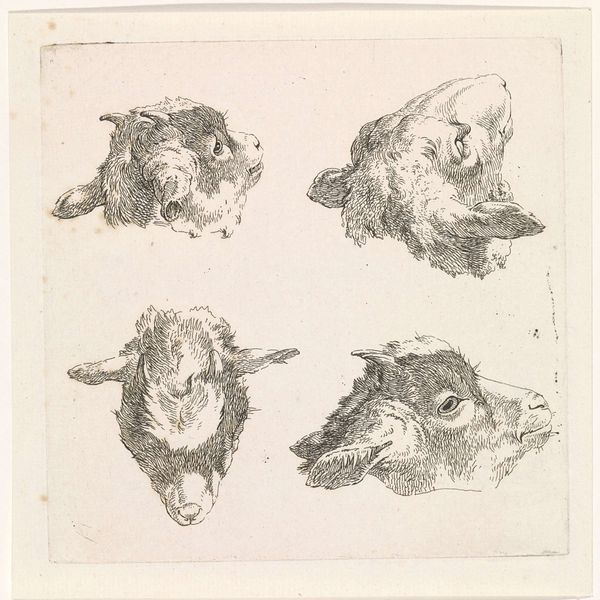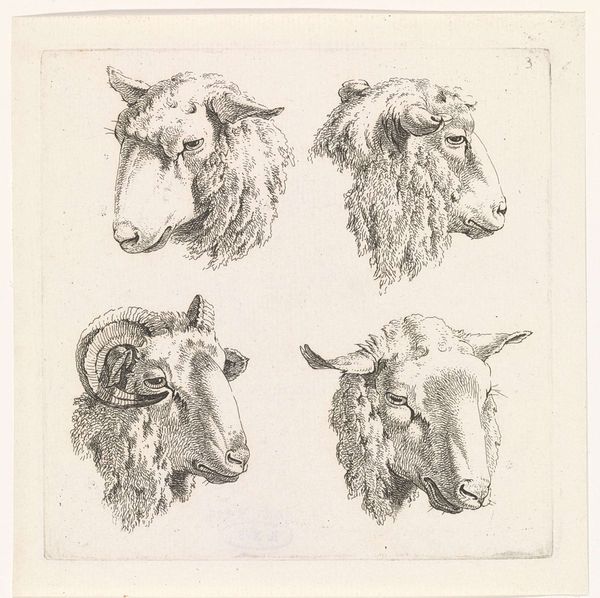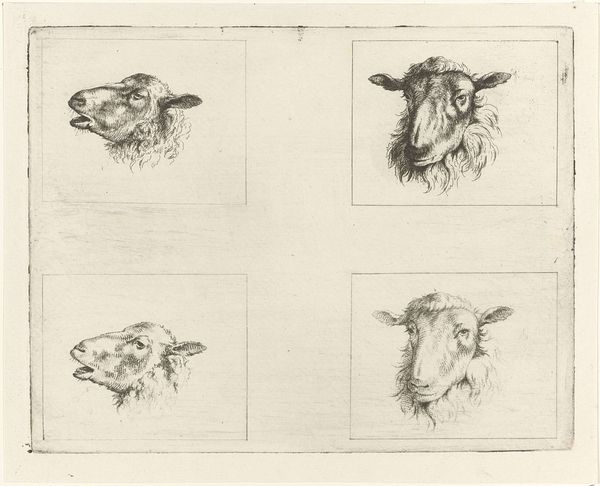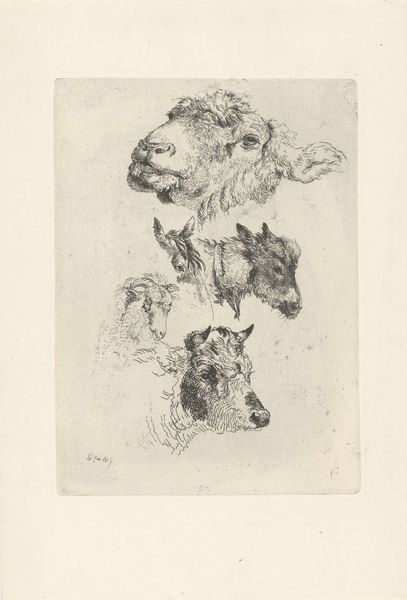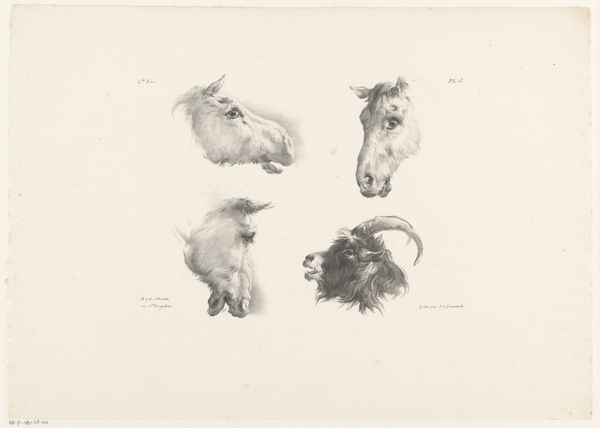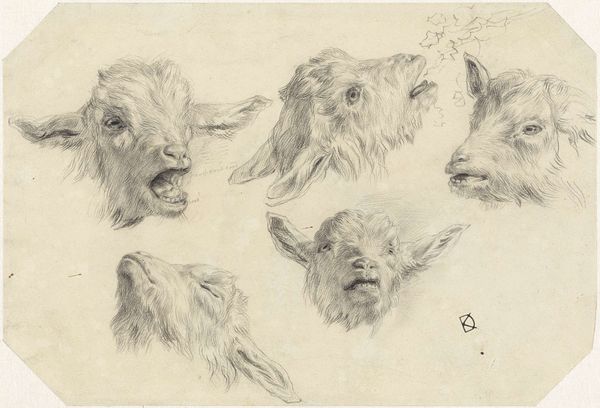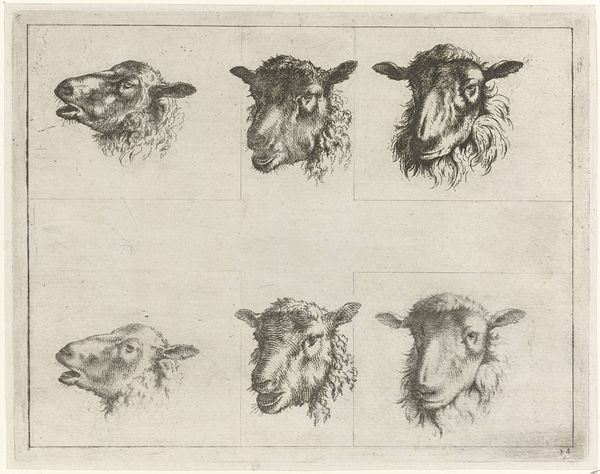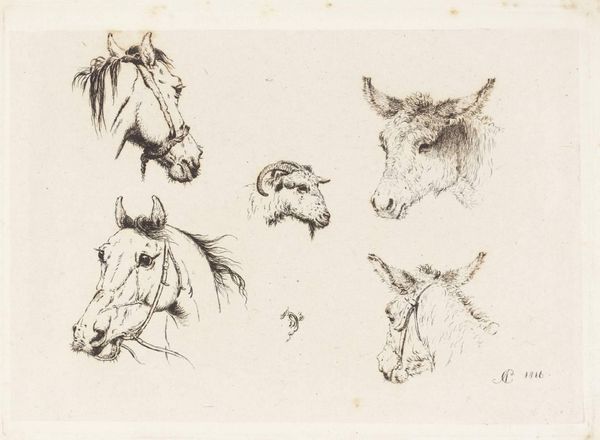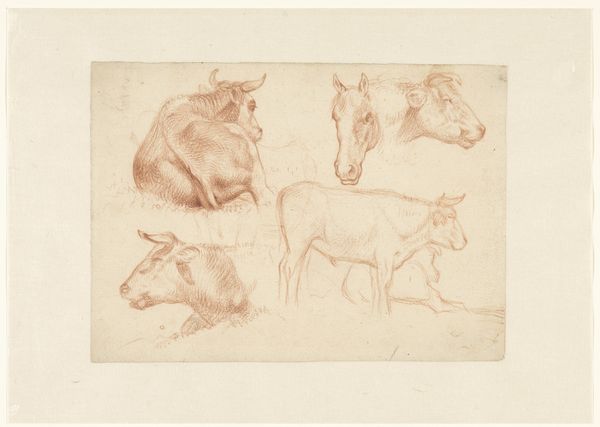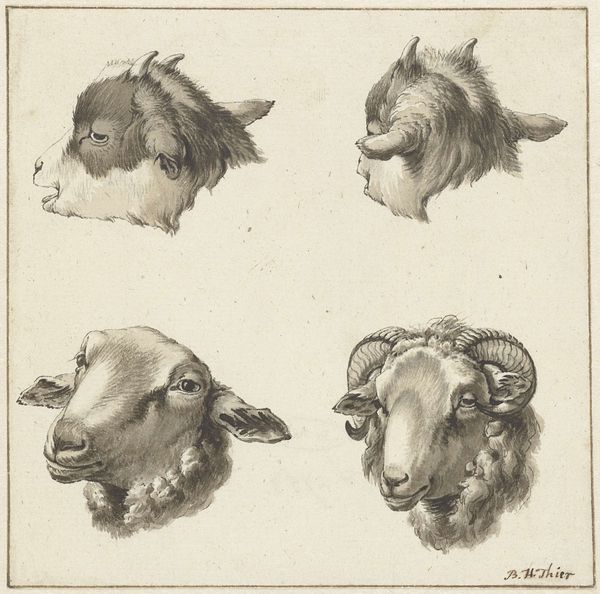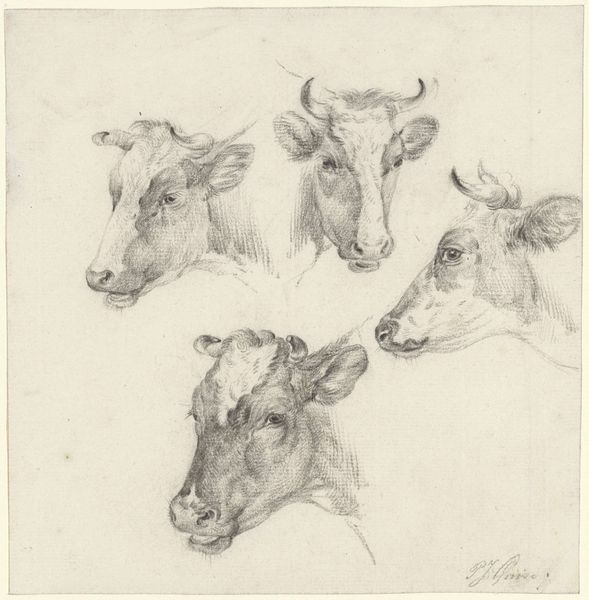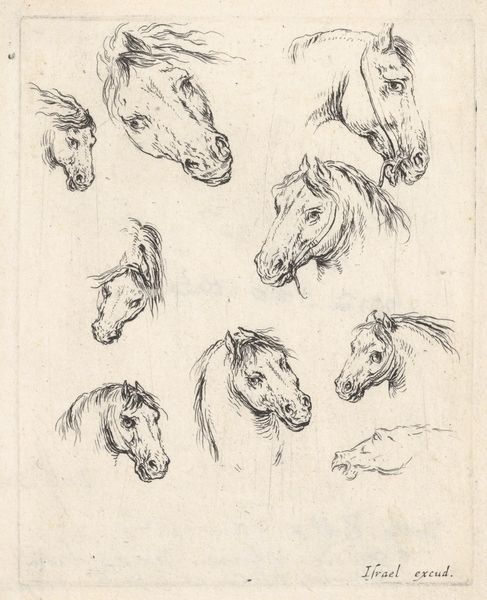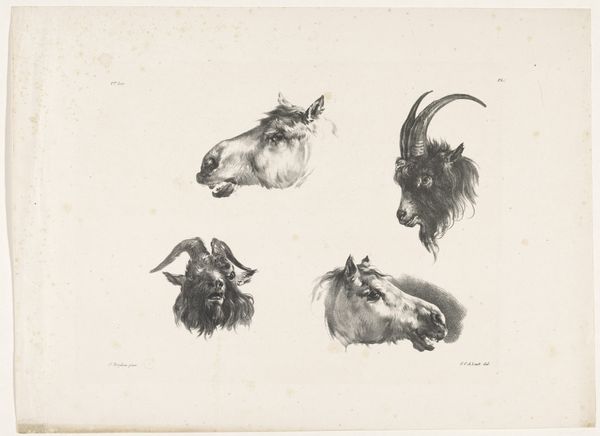
print, etching
#
portrait
# print
#
etching
Dimensions: height 133 mm, width 132 mm
Copyright: Rijks Museum: Open Domain
Curator: We are looking at "Vier koppen, van een ram en van geiten," or "Four Heads, of a Ram and Goats" created in 1777. Barend Hendrik Thier composed it with etching on print. Editor: It feels like I've stumbled into some old zoology textbook. These detailed animal portraits are rendered with a stark simplicity. I’m particularly struck by the ram in the upper right; those horns have so much presence! Curator: Indeed! In the late 18th century, this meticulous style was not unusual, because detailed studies of animal anatomy served the budding scientific inquiries of the time. This print exemplifies how art was entangled with enlightenment ideals. The etching captures precise details, and aided classification. Editor: The precision is captivating! Each hair seems individually placed. Do you think Thier worked from life or anatomical studies? It feels like something more than a simple pastoral scene. Curator: Given the dedication to detail, he most likely drew these from life. Perhaps they were livestock he observed and immortalized through print. As for context, remember that naturalism had gained a big status within European art since it offered new possibilities of artmaking and social standing to artist's clientele, within the scientific or intellectual circles of the moment. Editor: There’s something melancholy in the eyes of the lower left goat. That goat’s gaze feels intensely personal. It contradicts the overall scientific tone. Curator: Perhaps this is due to the era it was made; romanticism would bring emotion to the front within art creation and it probably had influence even in earlier and seemingly non-subjective representations. Editor: A poignant observation! It gives depth and reflects the changing attitudes towards nature and sentience in that period. It's not only a depiction, but it evokes reflection and appreciation for life. Curator: That is the point! Such a work of art demonstrates perfectly the thin line between observation and emotion, fact and interpretation. Editor: This encounter shifted how I appreciate older pieces in public collections; recognizing its intrinsic emotion alongside its historical weight is invaluable!
Comments
No comments
Be the first to comment and join the conversation on the ultimate creative platform.
